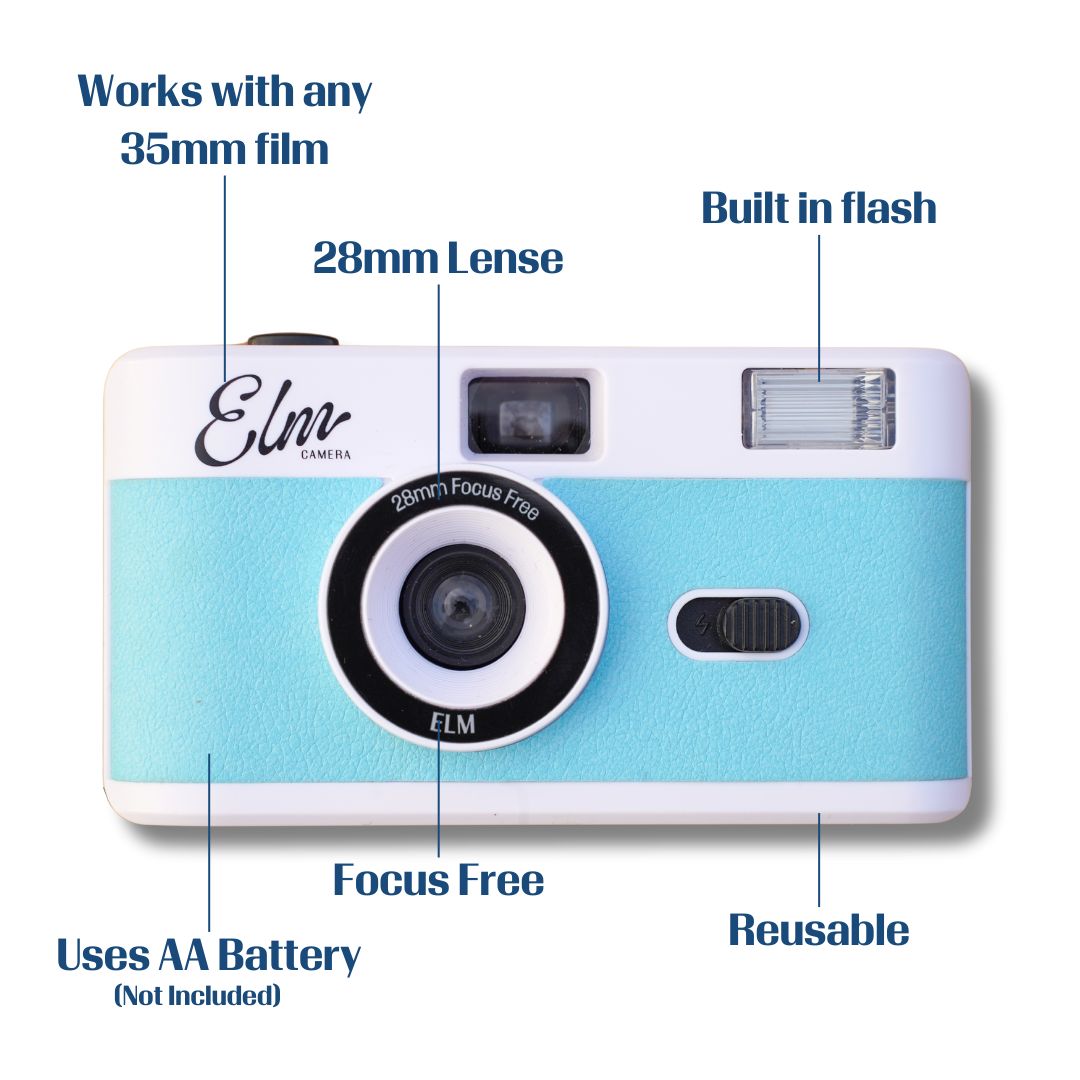It’s a common misconception that every film photo will turn out perfectly, especially for beginners. Film photography is an art that takes a little practice, and results can vary depending on lighting, technique, and how the camera is handled. Here’s what to keep in mind:
1. Learning Curve
If you’re new to film, it’s normal to have some trial and error. Film reacts differently to various lighting conditions, and it’s possible that a few shots might not come out as planned. Don’t worry—we’ve got you covered! Check out our “How to Use the Camera” guide for tips to improve your shots and get the most out of your ELM camera.
2. Our Guarantee
We’ve tested our cameras extensively to ensure they work well and produce great photos. If you suspect a malfunction with your camera, contact us. We’ll guide you through troubleshooting and, if needed, exchange it for a new one.
3. Common Causes of Issues
Some problems can occur due to factors outside the camera itself. Here are a few things to watch out for:
- Improper Handling: Loading film incorrectly, ripping the film, or exposing it to extreme conditions (like water) can damage your photos.
- Developer Mistakes: If your photos don’t develop correctly, it could be an error on the part of the film lab.
- Lighting Conditions: Shooting in very low light without flash or in harsh sunlight can affect photo quality.
4. Take Responsibility for Best Results
You play a key role in how your photos turn out. By following our guide and practicing proper handling, you can minimize mistakes and maximize the quality of your shots.
Film photography is all about embracing the journey—including its imperfections. With a little care and practice, you’ll capture some truly magical memories.
This version is approachable, helpful, and builds trust while setting clear expectations for the user. It also encourages responsibility without sounding accusatory.



